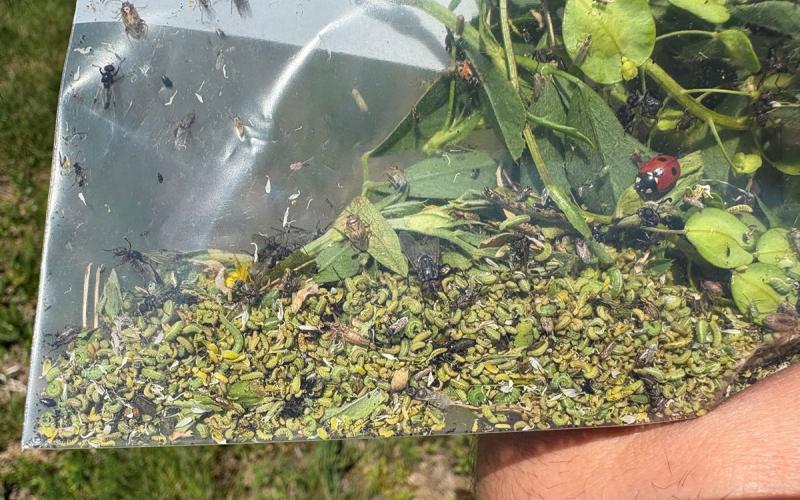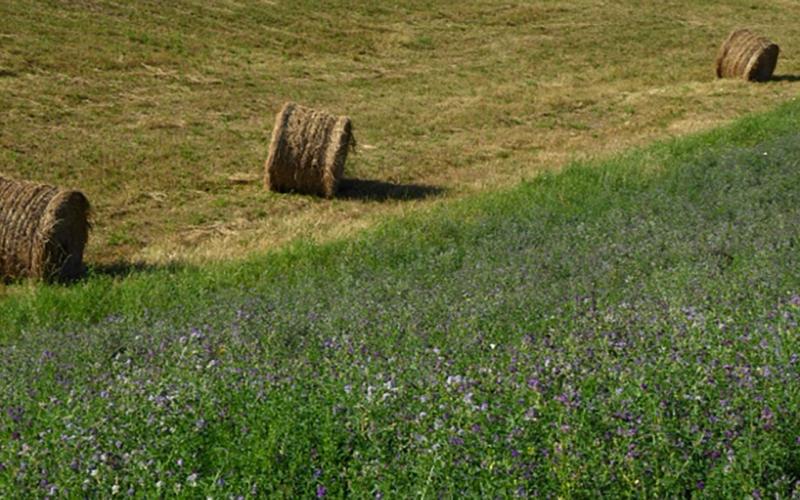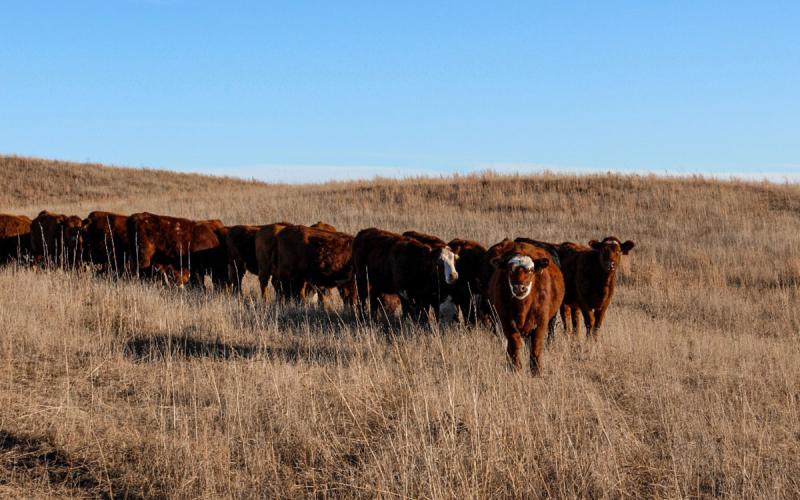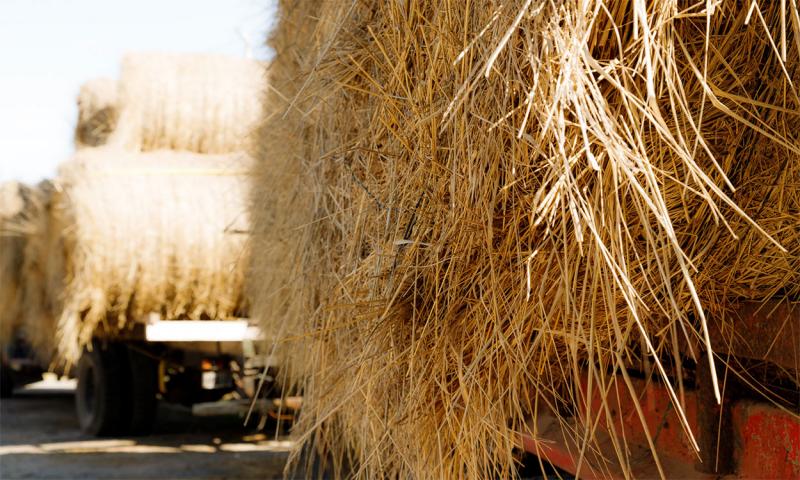
Pasture conditions in South Dakota are currently reported at 14% very poor, 40% poor and an additional 32% fair (South Dakota Crop Progress Report May 17, 2021). Given current drought designations and pasture conditions, the current forage production is being forecast at 85% or less for all but one or two counties in South Dakota. Approximately two-thirds of the state is forecasted to have 70% or less than average forage production (U.S. Department of Agriculture Natural Resources Conservation Service (USDA NRCS), South Dakota Grasslands Percent of Normal Forage Production 5-515-2021).
This reduction in current and anticipated pasture forage availability may require production changes for producers across the state. With feed being a limiting production factor, the decision comes down to hauling feed or hauling cows. As producers face this decision, many pieces of information need to be collected to decide for their operation.
Information to Collect
How Much Hay Is Needed?
Producers need to determine how much feed is required to meet the nutritional needs of the cowherd. To make this determination, producers need an accurate weight of the cows in their herd, herd size and how many days the extra feed will be required.
These three numbers are used to calculate the total amount of feed needed. Start by making an accurate inventory of the feed available in current inventory. Using subtraction, the total amount of feed needed to be purchased can be calculated.
Cost to Haul
Trucking costs are going to be a significant line item in this budget comparison. Trucking rates to haul hay and cattle vary across the state.
To find rates to haul hay or cattle, as well as how much hay and the number of cows that make a load, contact area truckers.
When calculating the rate to haul the cattle, remember to add round-trip miles.
Cost of Feed
Grass hay and other forages are the most commonly used replacement feedstuffs used on-farm or fed in an alternative location. The purchase price of the forages needs to be accurate for the type and kind of replacement feed purchased. The other costs related to feeding that need to be included are the yardage rates at the alternate location. This rate varies from yard to yard and may range from 30 cents to 50 cents per head per day, above feed costs.
Calculation
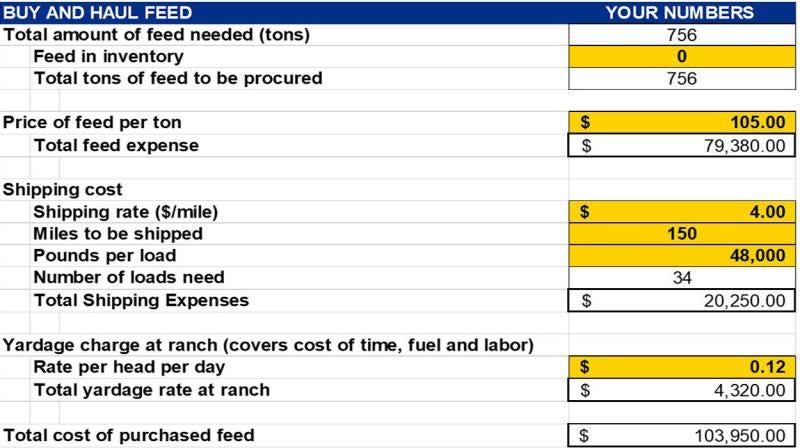
To accurately evaluate the haul or feed options, a full budget of the choices needs to be calculated.
The SDSU Extension Move the Cows or Move the Feed calculator aids producers buying feedstuffs (generally hay type feeds) and haul the feed to the operation, or to haul the cattle to the alternate feeding location.
Evaluation of the options can aid producers facing limited resource situations, such as drought or other disasters.
Example Herd
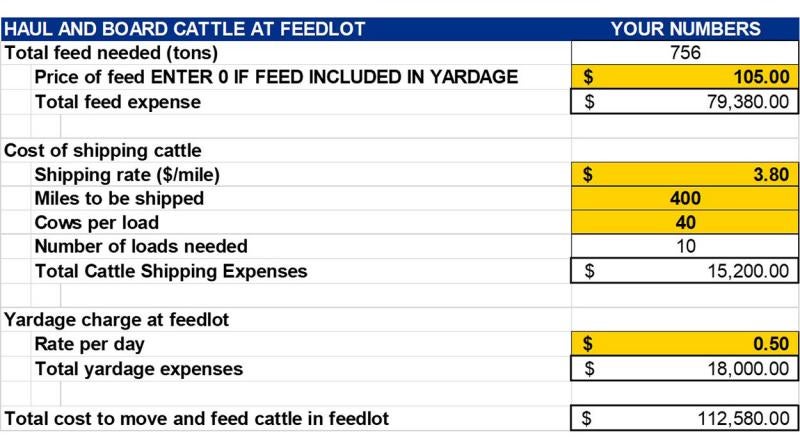
Four hundred head of 1,400-pound cows, being fed for 90 days. The yellow highlighted numbers are those where each operation needs to enter their data. For this operation, the option of hauling the feed is more economical. The additional considerations the operation needs to keep in mind include:
- Fences and the ability to keep cows contained
- Water availability
- Ability to feed the purchased feedstuffs
The extra expense of electric fence equipment, hauling water or hay feeders or feedbunks are not accounted for in the calculator but need to be considered when making the feeding decisions.
Producers must input their data to make the numbers from the calculator relevant.
For assistance with the calculator, contact Heather Gessner, SDSU Extension Livestock Business Management Field Specialist.
